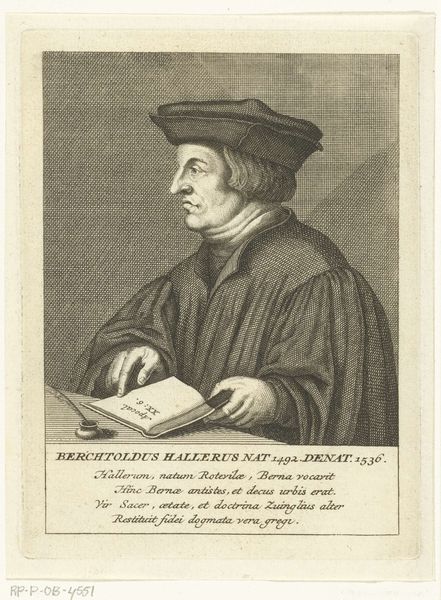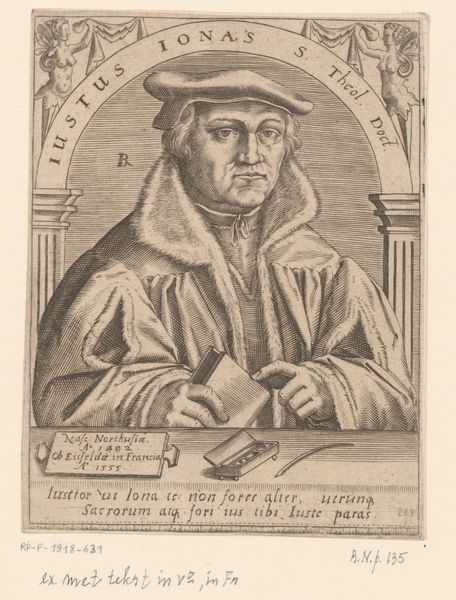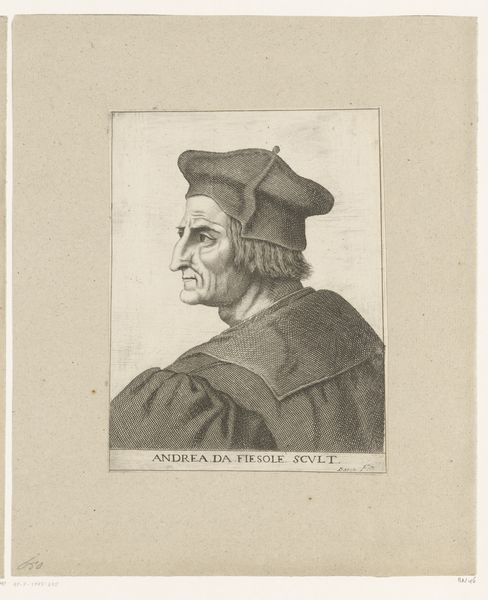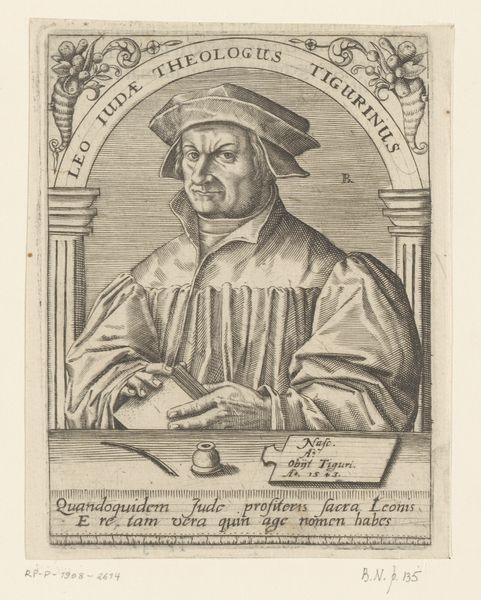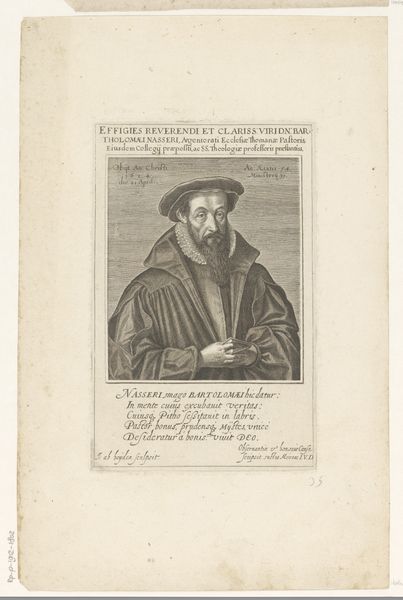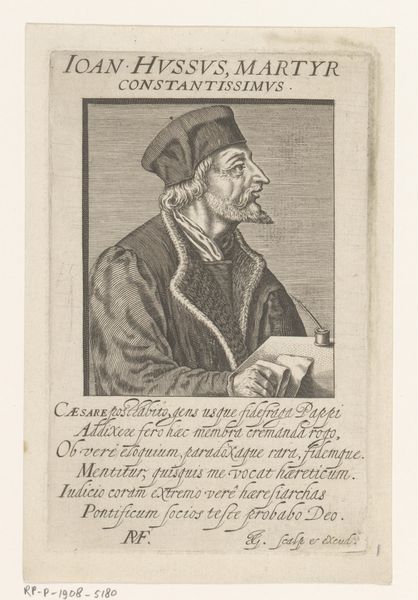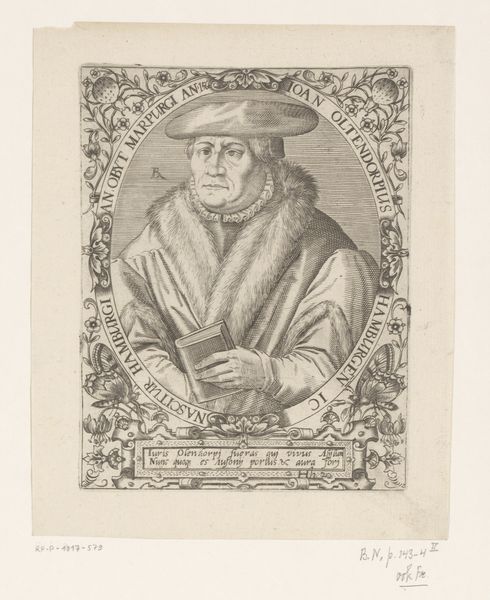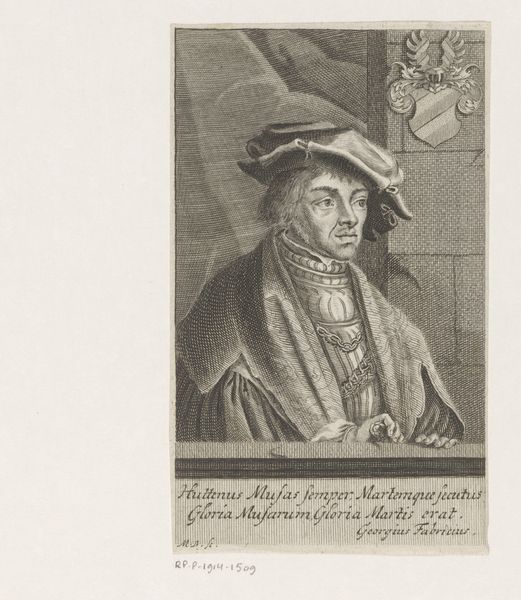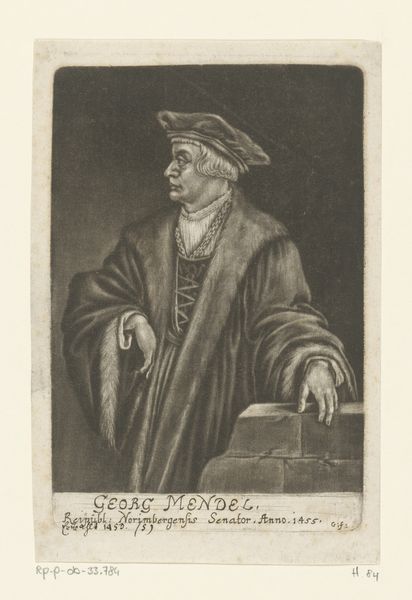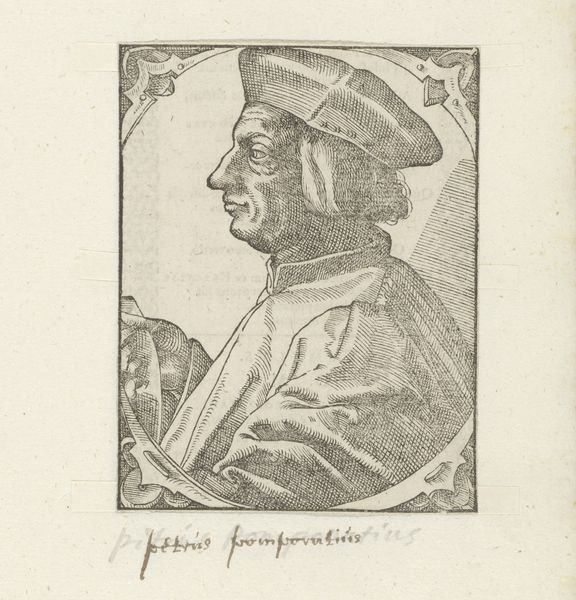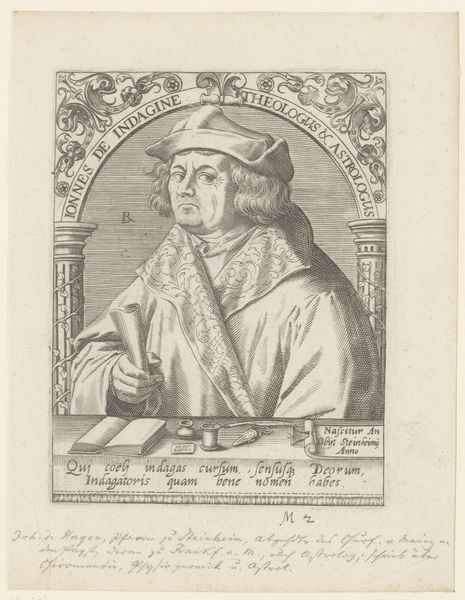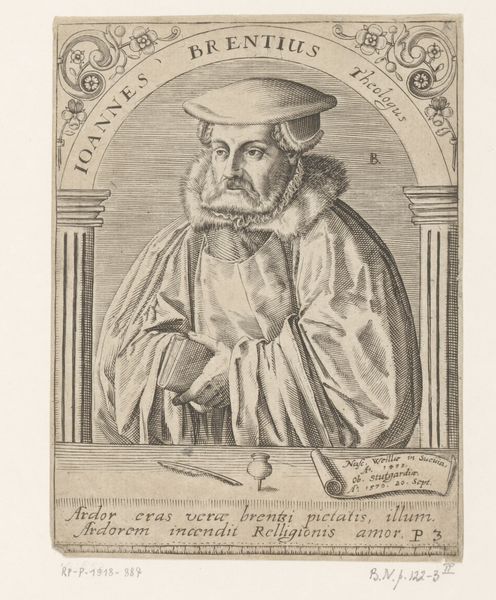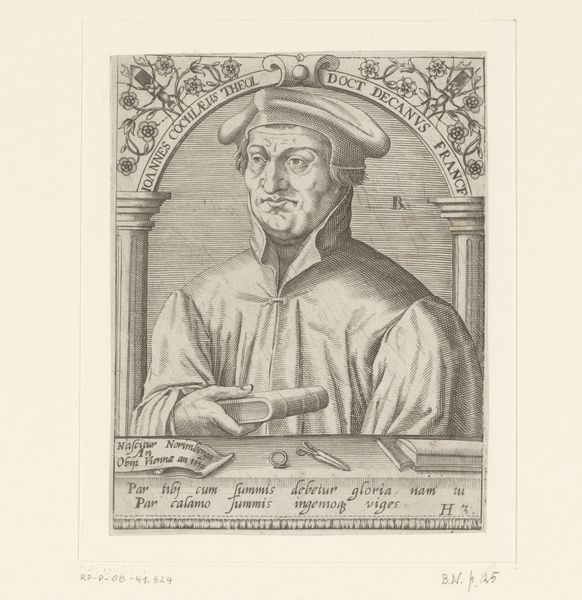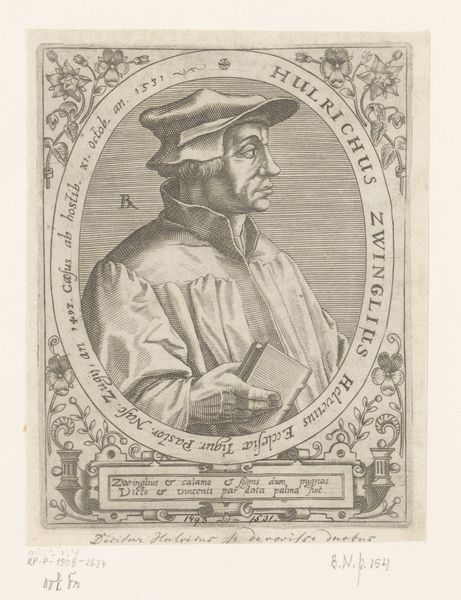
Portret van Zwitserse priester en hervormer Ulrich Zwingli 1681 - 1741
0:00
0:00
francoisvanbleyswijck
Rijksmuseum
print, engraving
#
portrait
#
baroque
# print
#
old engraving style
#
figuration
#
line
#
history-painting
#
academic-art
#
engraving
Dimensions: height 151 mm, width 113 mm
Copyright: Rijks Museum: Open Domain
Curator: This piece from somewhere between 1681 and 1741 is entitled "Portret van Zwitserse priester en hervormer Ulrich Zwingli," or, "Portrait of Swiss priest and reformer Ulrich Zwingli". It's by François van Bleyswijck and is currently held here at the Rijksmuseum. What do you make of it at first glance? Editor: Immediately, it feels severe. The monochromatic print work, the subject’s unwavering gaze, the sheer density of lines—it evokes a sense of solemn authority and the weight of intellectual labor. It’s an engraving, right? Curator: Exactly. It's an engraving on paper, in the Baroque style. What interests me here is situating Zwingli, this reformer, within the larger power dynamics of his era and in our contemporary moment. Look at his attire: how does that religious presentation signify status, and who does it include or exclude? Editor: Absolutely, the power dynamics are key. These portraits, these prints, were designed for circulation, to disseminate Zwingli’s image and ideals, influencing public opinion, particularly after his death. We have to acknowledge its role in constructing and perpetuating specific narratives surrounding the Reformation, specifically considering how visual rhetoric functioned in contrast and conformity to textual narratives during this turbulent time. Curator: I'm intrigued by the use of line. The density around his face really highlights this expression and seriousness of him. How can we consider the engraving, not just as an accurate record, but as a creative rendering—an act of interpretation? Editor: A compelling thought. The decision to portray Zwingli holding a pen and a book is certainly no accident. It reinforces the idea of him as a scholar, a thinker, a man of letters and faith. It is a visualization of Zwingli fighting with word and teaching. I suppose understanding these symbolic markers contextualizes him both in his time, as a signifier to literacy, as well as being able to understand a piece such as this today. Curator: Precisely. It makes one reflect upon not just his portrait, but the power that it has had for generations of observers to communicate ideas that are still held today. Editor: A crucial lens. I leave pondering the ongoing life of such imagery.
Comments
No comments
Be the first to comment and join the conversation on the ultimate creative platform.
